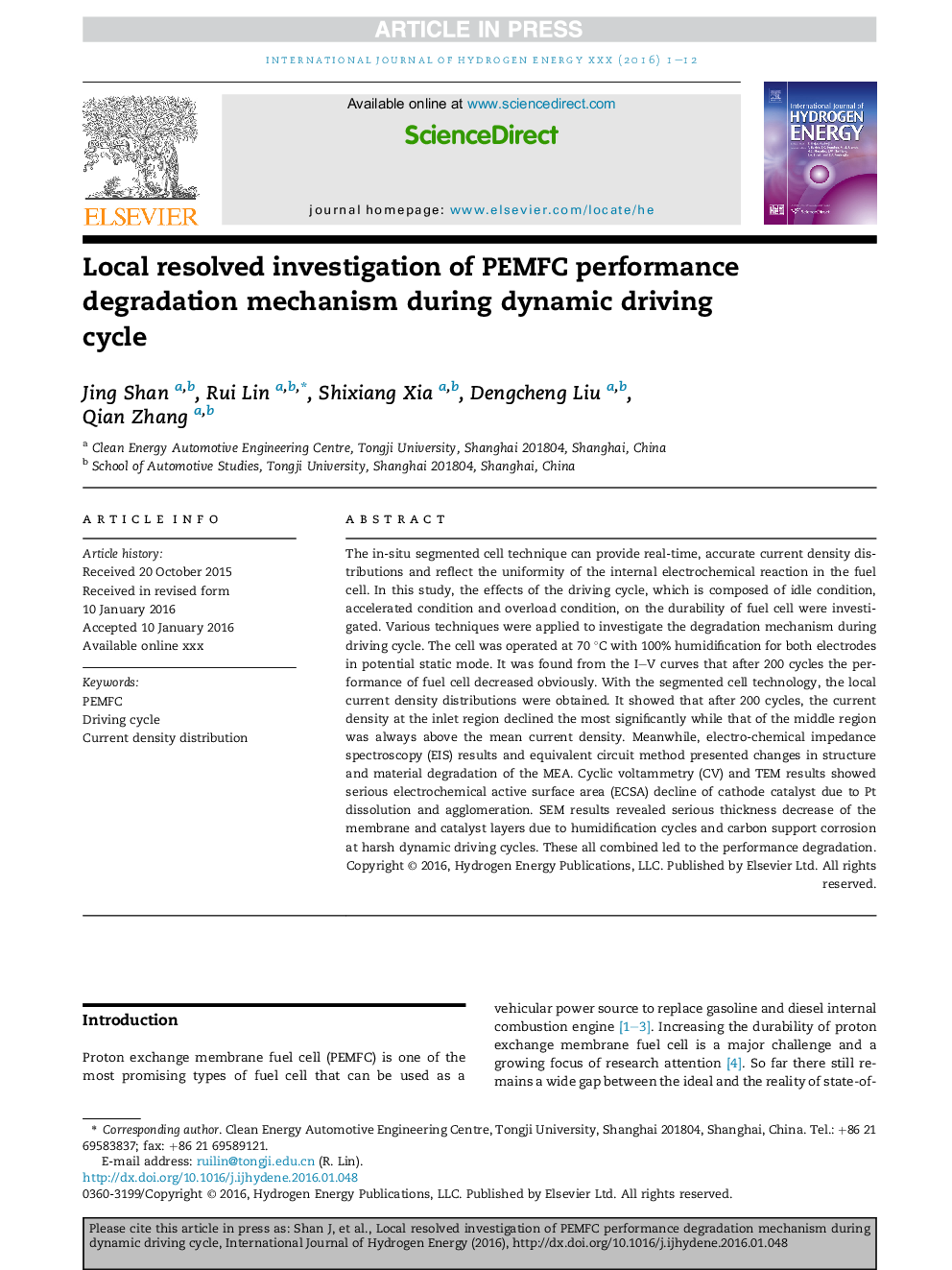| Article ID | Journal | Published Year | Pages | File Type |
|---|---|---|---|---|
| 7711407 | International Journal of Hydrogen Energy | 2016 | 12 Pages |
Abstract
The in-situ segmented cell technique can provide real-time, accurate current density distributions and reflect the uniformity of the internal electrochemical reaction in the fuel cell. In this study, the effects of the driving cycle, which is composed of idle condition, accelerated condition and overload condition, on the durability of fuel cell were investigated. Various techniques were applied to investigate the degradation mechanism during driving cycle. The cell was operated at 70 °C with 100% humidification for both electrodes in potential static mode. It was found from the I-V curves that after 200 cycles the performance of fuel cell decreased obviously. With the segmented cell technology, the local current density distributions were obtained. It showed that after 200 cycles, the current density at the inlet region declined the most significantly while that of the middle region was always above the mean current density. Meanwhile, electro-chemical impedance spectroscopy (EIS) results and equivalent circuit method presented changes in structure and material degradation of the MEA. Cyclic voltammetry (CV) and TEM results showed serious electrochemical active surface area (ECSA) decline of cathode catalyst due to Pt dissolution and agglomeration. SEM results revealed serious thickness decrease of the membrane and catalyst layers due to humidification cycles and carbon support corrosion at harsh dynamic driving cycles. These all combined led to the performance degradation.
Related Topics
Physical Sciences and Engineering
Chemistry
Electrochemistry
Authors
Jing Shan, Rui Lin, Shixiang Xia, Dengcheng Liu, Qian Zhang,
